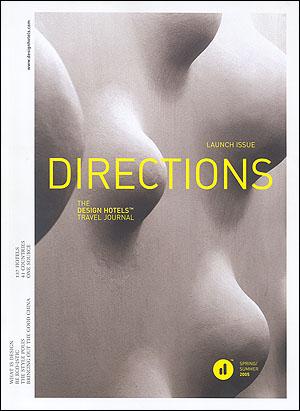CHINA IS UNDERGOING A REVOLUTION OF A DIFFERENT KIND IN THE 21ST CENTURY. THE WORLD'S MOST POPULOUS COUNTRY IS NOT JUST ON THE MOVE, IT IS HURTINGINTO TGE FUTURE AT BREAKNECK SPEED, AS AN ENTIRE NATION OF FACTORY WORKERS IS BEING TRANSEORMED INTO ONE OF CONSUMERS AND ENTREPRENEURS.

While the media spotlight continues to focus on China and its unstoppable economy, the nations of the world are grappling with the significance of the rise of modern China and reassessing their relations with the Middle Kingdom. The spectacular evolution of Beijing and Shanghai - possibly the world's most rapidly changing cities - has drawn the attention of the world. An unprecedented building boom has overtaken the two gateway cities of China. Beijing has commissioned a series of landmark projects that is set to transform the city in time for the 2008 Olympics. This includes bold and ambitious developments like the $500 million National Stadium, better known as The Nest, and the National Swimming Center or Watercube - centerpieces of perhaps the most grandiose of all Olympic building projects. In addition to the 208 sites, Beijing is taking modernistic leaps in two other buildings. The National Grand Theater, christened The Egg because of its shape, is a massive titanium-and-glass shell designed by Paul Andreu that appears to float on float on a lake, while the colorful CCTV Building by iconoclastic Dutch architect Rem Koolhaas is an abstract design that intersects two Z-shaped towers.

An hour and a half north of the city, the award-winning Commune by the Great Wall, located in the Shuiguan hills, is a complex comprising eleven individually shaped and eclectically furnished villas plus a central clubhouse. The collection is the brainchild of Pan Shiyi and his wife Zhang Xin, who work with exclusively Asian architects to create "symbols of our era of human compassion". The project's extreme ingenuity and contemporary design won it a prize at the Venice Biennale in 2002. A model of the complex is now in the Centre Pompidou, Paris, and is the first object from China to be on permanent display.
Over in Shanghai - which is set to host the World Expo in 2010 - the dizzying and frenetic pace of change has made the city a unique architectural marvel. In its heyday, Shanghai was a city of glitz and glamour that offered all the trappings and pleasures of civilization. The coming to power of the Communists and the formation of the People's Republic meant the party had to come to an end. The Communists dried up the opium addicts, shut down the infamous brothels, 're-educated' the prostitutes, eradicated the slums and denounced the capitalists and the bourgeoisie.


Today's Shanghai is a city trying to recapture all its past glories, a city whose doors have been swung wide open to welcome the world, and c city where 'liberalization' is the new mantra. The new Shanghai coming back with a vengeance. Nowhere is this more apparent than in the resurrection of the Bund, which is starting to come to life once again as the lights return to the neo-classical and art deco edifices that were built here during colonial times. There on the Bund is an uber-chic lifestyle destination that created waves around the world even before it opened. It houses four top-end restaurants featuring celebrity chefs like Jean-Georges Vongerichten, and The Cupola - which seats just two. Also included are a caf , an art gallery with thought-provoking contemporary Chinese exhibitions, two floors of high-end retailers including Giorgio Armani's China flagship store, and the world's first Evian spa outside of France.
Across from the Bund, on the opposite side of the majestic Huangpu River, the Lujiazui financial district rose up in a little over a decade on what was previously marshland. The Oriental Pearl Tower is an icon that has helped place Shanghai on the world map, and is flanked by numerous ultra-futuristic buildings - including the renowned Jinmao Tower - that make Shanghai the city of tomorrow. Currently under construction is the World Trade Center, which looks to become the world's tallest building when completed.
Not content to be the factory of the world, China also has a fast-growing creative movement that blends the country's 5,000 years of history with a modern outlook to produce a new vocabulary of aesthetics. Today, its contemporary art scene is a well of creativity, with leading artists crossing disciplines with ease. Worthy of note is Factory 798, a Bauhaus industrial complex in northeast Beijing, built in the 1950s by East German engineers and now a collection of galleries, cafes, bars and restaurants. Meanwhile, a former candy factory on Taikang Lu, built around the same time, has emerged as a creative hub for Shanghai's vibrant art and design scene, both avant garde and experimental.
Perhaps the most exciting aspect of modern Chinese art is the amount of creative energy that is becoming apparent at the moment. Remarkable strides have been made in the last decade, but there is no telling what influence China's rich heritage will have on artists the world over - in design, fashion, lifestyle, dance, music, theater and architecture. In the words of Pan Shiyi, "Asia is now faced with an unprecedented opportunity. The buildings in Europe were completed 300 years ago, and as the spotlight returns to Asia, this will be our chance to do something, and we should make good use of it."





